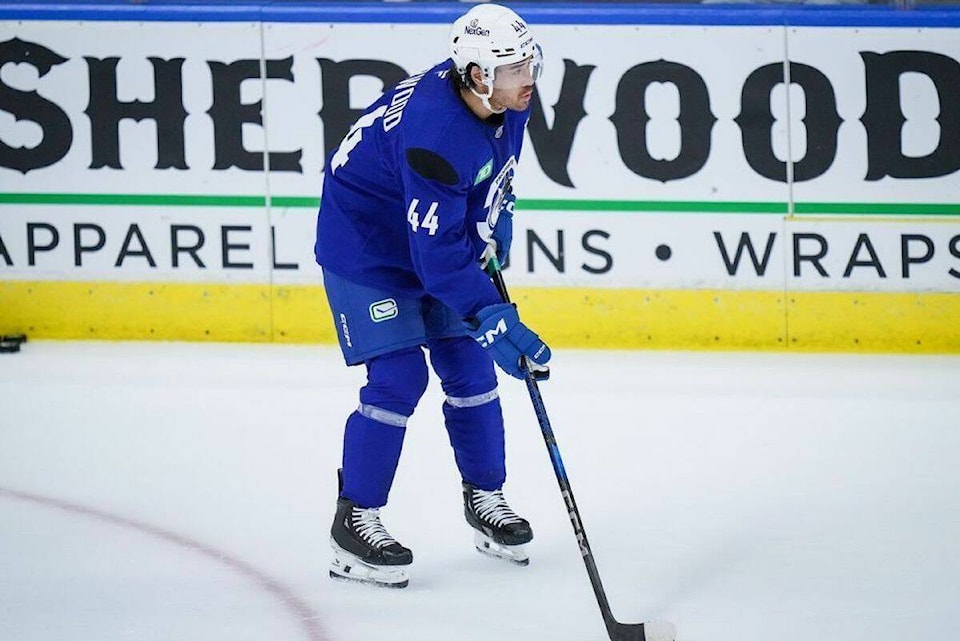Any fears that Stephen Curry was looking to leave the Golden State Warriors seem to have been allayed by news of a one-year, $62.6 million extension (H/T Adrian Wojnarowsk i of ESPN), keeping him under contract through the 2026-27 season. Curry recently removed the Warriors from his Instagram bio and seemed to be flirting with LeBron James on a joint post.
While a trade to the Los Angeles Lakers was technically possible , it certainly seemed far-fetched. The following FAQ addresses the impact of Curry's extension and the Warriors' short and long-term future. Is Curry extending for "just" one year a sign he's not committed long-term? No, the issue is age.

Curry is already 36 and under contract (before the extension) at $115.4 million through 2025-26. The Over-38 Rule limits players of Curry's age to three-year contracts.
His extension is technically a three-year deal (the two pre-existing plus the $62.6 million for 2026-27). This represents the longest he could sign for with the Warriors now.
Note: The Over-38 Rule allows longer deals but not in a way that allows the player to earn anything more than they would, in this case, over the three total years. For a player with over 10 years of experience, the max salary is $49.2 million for 2024-25.
Curry will earn more than that this season at $55.8 million. When a player with full Bird rights re-signs with a team, they can get up to the league or personal max (105 percent of their prior salary).
Curry has been earning for a long time with the Warriors and is earning about $6.6 million above the league max. The most a player can extend for is 140 percent of their expiring salary, but $83.
4 million is way over the league and personal maxes, so he's limited to 105 percent of his expiring $59.6 million in 2025-26—which is why his extension will be for $62.6 million in 2026-27.
Curry's extension doesn't directly impact this season. The Warriors already chose to have a first-apron hard cap at $178.1 million by signing De'Anthony Melton to the non-taxpayer mid-level exception (12.
8 million) and acquiring Buddy Hield and Kyle Anderson via sign-and-trade. With 18 players under contract (including three two-way deals and Jackson Rowe's Exhibit 10 summer deal that don't count against the cap), the Warriors are at $177.6 million.
That's almost $534,000 under their spending limit, so they're capped out for the 2024-25 season. The tax bill is projected to be $14.6 million, a staggering decrease from last season's $176.
9 million. Outside of trades (that don't add salary), the only variables are Lindy Waters III ($2.2 million) and Gui Santos ($1.
9 million), who are non-guaranteed. The Warriors can cut and replace either with a different minimum player. The Warriors had explored trades for Lauri Markkanen of the Utah Jazz but couldn't reach a deal this summer.
He won't be moved this season since the Jazz renegotiated and extended his contract. Golden State can pursue other targets with plenty to offer. If the franchise doesn't intend to extend Jonathan Kuminga or Moses Moody, the pair has some value on the market.
Andrew Wiggins' contract may not appeal to many teams because of its size and length, but as part of a more significant deal, he could be movable along with the expiring deals of Gary Payton II and Kevon Looney. Recently signed free agents (Melton, Anderson and Hield) can't be traded until December 15. Regarding first-round draft capital, the Warriors can offer twos from 2025 to 2027 and swaps in the other years through 2031.
The only obligation is to give the Washington Wizards a top-20 protected first in 2030 (otherwise, it'll be conveyed as a second-rounder). The Warriors don't have much in the second round outside of a couple from the Atlanta Hawks (2026 and 2028) and their own in 2029. The Minnesota Timberwolves can swap 2031 second-rounders, but the Warriors can trade the lower of the two.
The main caveat is that any trade can't add salary with the hard cap. If the team sends out 3-4 players for one, the Warriors must account for getting back to the minimum of 14 regular contracts while staying under the first apron. This may surprise some, but Curry can still be traded this season, even immediately upon signing his extension.
With the new rules of the 2023 collective bargaining agreement, players can extend for up to 120 percent and four total years without exceeding the extend-and-trade limitations. Curry's extension is 105 percent, and his revised contract has three total years, so the typical six-month trade restriction doesn't apply. None of the above is meant to suggest that the Warriors or Curry are looking to part ways.
Factually, however, it's legal this season. Note: Had Curry extended at the full 120 percent, his salary would automatically reduce to $62.6 million (105 percent) before the 2026-27 season, and he would be trade-restricted past the Feb.
6 deadline. Per a source familiar with the extension, Curry's salary is explicitly at the 105 percent dollar figure, not the 120 percent climb. With commitments to Draymond Green, Wiggins and Curry, the Warriors do not project to be one of the few teams under a $154.
6 million salary cap. However, the franchise has yet to invest heavily in its roster at this stage. Before November, the team will pick up Brandin Podziemski's third-year rookie-scale option of $3.
7 million for 2025-26. Trayce Jackson-Davis has a non-guaranteed $2.2 million, but that's a bargain for an emerging rotation player and potential starter.
Santos has a similar $2.2 million (team option), and while he may earn another year, the figure is manageable. The more extensive variables surround Kuminga (No.
7 in 2021) and Moody (No. 14), who are extension-eligible until this season's start. If they don't re-sign, they'll be restricted free agents next July.
The Warriors will have the right of first refusal on any offer. Looney, Gary Payton, Melton and Waters are among the unrestricted free agents in 2025—Looney and Payton are extension-eligible. The two-way players (Reece Beekman, Daeqwon Plowden and Pat Spencer) can also be restricted.
The team has its own first-round pick, which would be $4.7 million if the Warriors get the No. 14 as they did in June—if they improve in the standings, that number only decreases to as low as $2.
7 million for No. 30. When budgeting for Kuminga, Moody and any other acquisitions, the Warriors will need to monitor a few projected lines: the luxury tax threshold ($187.
9 million), first apron ($195.9 million) and second apron ($207.8 million).
For instance, if Kuminga and Moody re-sign to earn a combined $35 million for 2025-26, the Warriors would have 11 players (including Jackson-Davis and Santos) and $8-10 million to spend on 3-4 more players. If the team decides to stop at the first apron, the budget would be about $16-18 million for the rest of the roster, including any re-signed players and/or the non-taxpayer mid-level exception ($14.1 million).
The second-apron budget would give about $28-30 million in flexibility in keeping free agents and/or the taxpayer mid-level ($5.7 million). Choosing to pay Kuminga or Moody (or negotiating smaller deals) changes the Warriors' flexibility, but the biggest spending tool remains the non-taxpayer mid-level.
The NBA's salary cap is projected to climb 10 percent each season. Curry's figure may be massive at $62.6 million, but it's only increasing by five percent from 2025-26.
The Warriors will need to budget for the luxury tax threshold ($206.7 million), first apron ($215.5 million) and second apron ($228.
6 million). Golden State can even look to go under the salary cap should it choose to get out of Hield's salary—provided Kuminga and Moody don't extend. If they do, depending on the number, the team will have some flexibility under the aprons.
Curry's salary shouldn't be a problem. This one is unanswerable because it's up to Curry to decide how long he wants to play. The best guess is that the Warriors would welcome him for as long as he desires.
Golden State did say goodnight to the Splash Brothers, choosing not to pay Klay Thompson what he was asking for and instead sending him via sign-and-trade to the Dallas Mavericks. But the Curry era will continue until 2026-27 (barring trade) when the All-Star guard will be 39 years old. Given that James recently re-signed with the Lakers at age 39, it's not wild to think Curry will choose to continue beyond his current contract.
He'll be extension-eligible again in two years or as a free agent in 2027. The Warriors have timed the rest of their contracts to expire in the same years. Green ($30.
2 million) and Wiggins ($27.7 million) can get out one year early with player options before 2026-27. Only Hield is on the books for 2027-28 (player option), but the year prior, his $9.
7 million salary has just $3 million guaranteed—Golden State can be free and clear of all obligations once Curry's deal wraps. The Kuminga and Moody decisions will impact those figures, drafted players and other acquisitions. The team must consider Podziemski, whose rookie-scale extension would start in 2027-28 if signed in 2026.
Ask the French National Team about Wardell Stephen Curry II. This ride isn't over yet. *Email Eric Pincus at eric.
[email protected] and follow him on X/Twitter @EricPincus ..



















